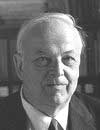.
Charm quark
The charm quark is a second-generation quark with a charge of +(2/3)e. It is the third most massive of the quarks, at 1.3 GeV (a bit more than the mass of the proton). It was predicted in 1970 by Sheldon Glashow, John Iliopoulos, and Luciano Maiani, and first observed in November 1974, with the simultaneous discovery of the J/ψ charm particle at SLAC (Stanford Linear Accererator Center) by a group led by Burton Richter and at BNL (Brookhaven National Laboratory) by a group led by Samuel C. C. Ting. The particle was named J by the BNL group and ψ by the SLAC group; when the naming controversy could not be resolved, the compromise J/ψ was adopted.
![]()
Charm Quark
Composition: Elementary particle
Family: Fermion
Group: Quark
Generation: Second
Theorized: Glashow, Iliopoulos, Maiani, 1970


Burton Richter, Samuel C. C. Ting
Discovered: Burton Richter et al. and Samuel C. C. Ting et al., 1974
Mass: 1.3 GeV/c2
Electric charge: +2/3 e
Spin: ½
Hadrons containing charm quarks
Some of the hadrons containing charm quarks include:
* D mesons contain a charm quark (or its antiparticle) and an up or down quark.
* Ds mesons contain a charm quark and a strange quark.
* There are many charmonium states, for example the J/ψ particle. These consist of a charm quark and its antiparticle.
* Charmed baryons have been observed, and are named in analogy with strange baryons (e.g. Λc+).
Retrieved from "http://en.wikipedia.org/"
All text is available under the terms of the GNU Free Documentation License

